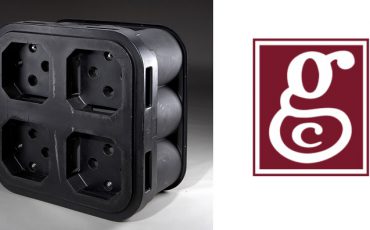
Rotational molding vs. injection molding is a comparison that designers of plastic parts and products need to make in order to control costs and promote quality. Both plastics manufacturing processes have their advantages, so let’s examine how each one works and then compare them in terms of design freedom, tooling costs, and plastic materials.
Rotational Molding vs. Injection Molding
Injection molding uses plastic pellets that are melted and then injected into a mold, or tool, via hydraulic pressure. Rotational molding loads powder or resin into a mold which rotates on two axes inside an oven until the inside of the mold is coated uniformly. Unlike injection molding, there’s no pressure in this process. Consequently, rotomolding supports molded-in hardware for strength and durability.
Design Freedom
Rotational molding also supports the creation of shapes and features that are impossible to achieve with other manufacturing methods. Moreover, this plastics manufacturing process supports strong, hollow products in a range of sizes. From the small plastic parts on point-of-purchase (POP) assemblies to large plastic tanks used for fluid containment, rotational molding is versatile.
Tooling Costs
Tooling costs are another way to compare rotational molding vs. injection molding. Usually, injection molds are made of aluminum or stainless steel. Stainless steel is used for higher volumes of parts across many cycles, but this type of tooling is expensive. By contrast, rotational molds are usually made of machined or fabricated aluminum and are significantly less expensive.
Plastic Materials
If you’re comparing rotational molding vs. rotational molding, you’ll also want to consider the plastic materials you can use. For both processes, the choices include polyethylene (PE) and polypropylene (PP), relatively low-cost materials with desirable properties. Types of rotomolded PE include linear low-density (LLDPE), high-density (HDPE), and static-dissipative PE for electrical and electronic applications.
Learn More About Rotational Molding from Gregstrom
Gregstrom Corporation of Woburn, Massachusetts (USA) is a rotational molder with over 75 years of experience. Design freedom, tooling costs, and plastic materials are just some of what there is to know about rotomolding, so we invite you to contact us if you’re a parts designer looking for the best way to manufacture plastic products.



